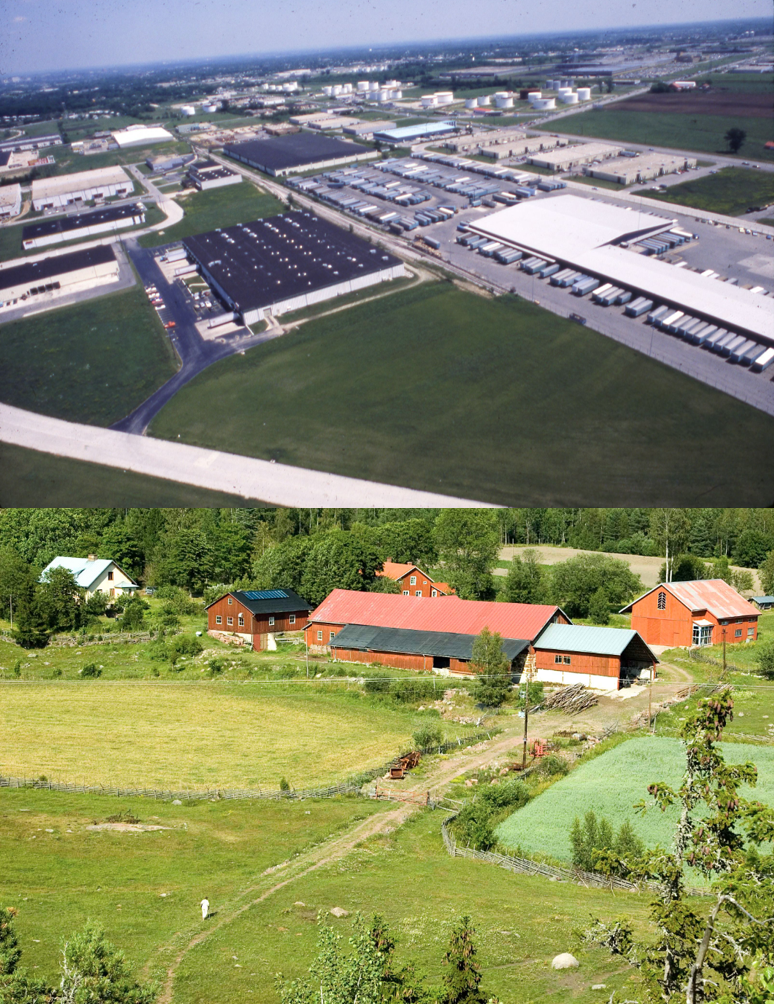Warehouses or Farms in Our County? A County Study Points to Warehouses
Charlotte Persons
An important question for the Comprehensive Plan update, Thurston 2045, will depend on citizens’ values. We must decide what kind of development we want in the rural part of Thurston County during the next twenty years.
Do we want to keep the codes based on the current Comp Plan and limit most industrial development in our rural areas to within one-half mile of I-5 interchanges?
Or do we want industrial development, including mega-warehouse complexes, on land that is currently zoned for agriculture and rural residences?
On December 6 the Board of County Commissioners heard a presentation by a contracted consultant on the Industrial Lands Study (ILS). The ILS makes many recommendations to make more industrial development possible in our rural county. See https://www.thurstoncountywa.gov/departments/community-planning-and-economic-development-cped/community-planning/industrial
Stakeholder groups have not had the opportunity to vet the ILS, and the county commissioners will not formally adopt it. Nonetheless, county staff, the Planning Commission and the Board of County Directors will consider its data and recommendations as an aid in future land decisions.
You can make comments at any time on the ILS by completing this form: https://www.surveymonkey.com/r/BNCCML7
But the most important time for citizens’ voices will be this spring – for comments on both draft Chapter 2 (Land) of the Comp Plan update and on the Planning Commission’s consideration of the Comp Plan amendment request for Beaver Creek Dairy Farm (see explanation below).
The ILS—Conclusions and Recommendations
Like the 2021 Buildable Lands Report, the ILS states that there is plenty of land zoned industrial, almost all of it within cities or their Urban Growth Areas (UGAs), as required by the Growth Management Act. But the ILS adds two other criteria – the need for industrial developers to have CHOICE in buying and developing land and the need for projects of more than 40 acres.
The ILS concludes that there is not enough industrially zoned land because of these two added criteria and the many large distribution projects built in the last five years in Tumwater and Lacey, with many more in the permitting stage.
Here are some key ILS recommendations to the county commissioners:
* Work with the cities to expand the cities’ UGAs and rezone the new UGA lands to industrial. (Industrial development within a city’s UGA allows extension of services such as water, sewer, stormwater, and fire protection. Industrial growth within or on the border of UGAs also meets the recommendations of the Growth Management Act.)
* Create no more than two industrial parks with services already in place
* Rezone agricultural land to industrial to create more industrial areas, especially areas of more than 40 acres
* Expand current industrial zoning in rural parts of the county to 1 mile on both sides of I-5 (not just 0.5 miles from I-5 intersections)
* Where industrial projects will be on land with flood plains, create inset flood plains to reduce the extent of floodplains (dig out the sides of streams to the level of the streambed)
The ILS and the Beaver Creek Farm Rezone Request
The impetus for the ILS was the 2021 request by the owner of Beaver Creek Dairy Farm for a Comp Plan amendment to rezone from Rural Resource/Residential to Rural Resource Industrial—in order to build warehouses. Beaver Creek Farm is located at 13333 Case Road SW, Olympia, miles from any city’s UGA. It is about .75 miles from the Maytown Intersection with I-5. Facing many similar rezone requests, county staff asked for the ILS to have more guidance when working with developers.
This farm is a particularly valuable habitat area because Beaver Creek winds through most of the 390 acres. A healthy run of coho salmon spawns in the creek, which joins the Black River, which in turn joins the Chehalis River. A Beaver Creek culvert under I-5 acts as an informal wildlife corridor. Because of that culvert’s importance in preserving the coho run, WSDOT has a project from 2023 to 2025 to design its replacement. The creek regularly floods the farm, in part because of the high-water table.
Because of the environmental problems posed by industrial development on this sensitive landscape, when the Comp Plan amendment was first proposed in 2021, 152 people wrote comments in opposition to the rezone request, many of them hydrogeologists and biologists. For more information on the value of the Beaver Creek Dairy Farm, see previous BHAS alerts from 2021, such as https://blackhills-audubon.org/bhas-alert-for-rezone-from-farming-to-industrial/#:~:text=A%20proposal%20is%20being%20made,a%20large%20warehouse%2Fdistribution%2
A new map submitted by the proponents in fall of 2023 shows the 168 acres that will be open space excluded from development—required buffers/critical areas around Beaver Creek and critical areas in the northwest corner of the farm that are near habitat for threatened Oregon Spotted Frog. But these requirements will not solve the water pollution problems posed by building many acres of warehouses and parking lots, both to the creek and to the wells of neighboring residents.
Because of the environmental issues, many people might say that this farm is one of the worst places in the rural county for industrial development. However, the last three ILS recommendations listed above seem to squarely target Beaver Creek Dairy Farm.
ILS and the Planned Wildlife Corridor
Another environmental factor is the Safe Passage I-5 project of Conservation Northwest to connect the Cascade Mountains to the Olympic Peninsula. Their highest priority I-5 wildlife crossing point in our area is only 2.5 miles south of Beaver Creek Farm. Adoption of the ILS recommendation to allow industrial development for one mile on both sides of I-5 would almost certainly block the creation of this crossing.
If we want to keep the rural character of our county, we citizens will need to push back against the recommendations of the ILS. Stay alert for further updates in spring.
Photo credit: Fisher Road Warehouses (public domain), and Borgboda Farm, by Borboerik.








